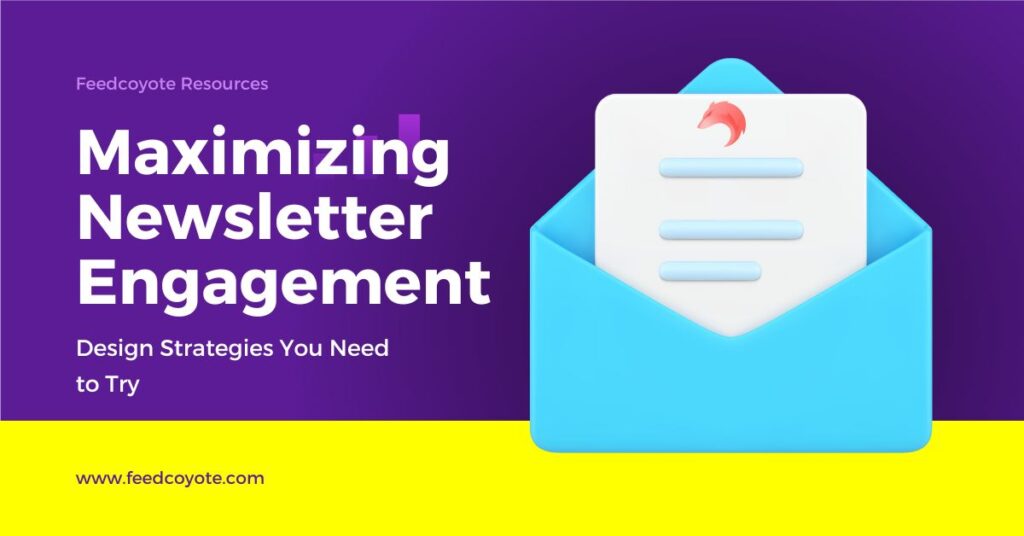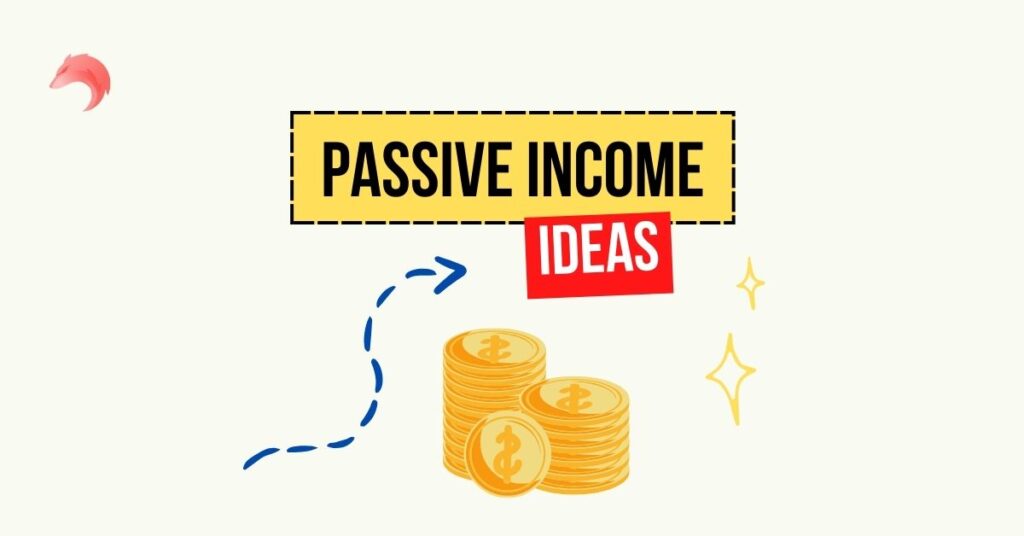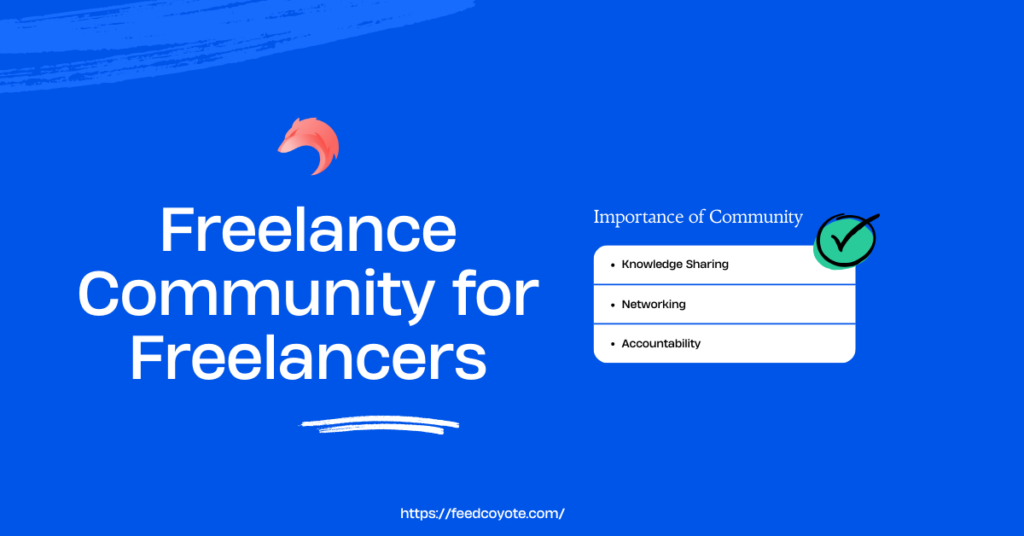Understanding your target audience is the first crucial step in tailoring an approach that resonates. Crafting a newsletter that captivates and retains interest starts with knowing who’s reading.
Compelling subject lines act as the gatekeeper to your content. A split second decision determines whether your carefully curated newsletter is opened or overlooked. The design of your emails is pivotal in not just drawing eyes, but maintaining engagement. As mobile devices increasingly dominate how we consume content, optimizing emails for these platforms has become non-negotiable.
As we explore the myriad of strategies to elevate your newsletter from mere background noise to a symphony that strikes a chord with its audience, this article will serve as your guide. From designing eye-catching emails to choosing the right marketing platforms, prepare to transform your newsletter into an engagement masterpiece.
Understanding Your Target Audience
When it comes to crafting an engaging newsletter design, knowing your target audience is the foundation upon which all other elements rest. Your email marketing campaigns hinge on how well you understand the demographics, interests, and behaviors of the people who populate your email list.
Identifying your target audience
The first step in designing an effective newsletter is to clearly define who your audience is. Start by gathering as much data as possible about the email users who will be reading your content. This might include age range, gender, location, job role, and interests. Leveraging analytics tools provided by email marketing platforms can give you a comprehensive picture of who is engaging with your email content and why.
To create a vivid picture of your audience, consider the following aspects:
- Demographics: Age, gender, income level, education, and occupation.
- Psychographics: Interests, hobbies, values, attitudes, and lifestyles.
- Behavioral Data: Past purchase history, email engagement rates, and website browsing behavior.
Once you’ve identified these attributes, you can more effectively tailor your email newsletter templates and content to speak directly to your audience’s needs and preferences.
Analyzing their preferences and behaviors
Now that you have a firm grasp on who makes up your audience, it’s critical to dive into their preferences and behaviors. What type of content garners the most engagement? Do they prefer educational material, exclusive content, or promotional emails? Are they more inclined to click through when presented with high-quality images or short, impactful text?
Tracking metrics like open rates, click-through rates, and conversion rates is crucial to understand what works and what doesn’t. Keep an eye on these data points to adjust your strategy accordingly. Here’s a breakdown of the types of preferences and behaviors to analyze:
- Content Type: Informational, entertaining, or sales-oriented.
- Device Usage: Whether your audience predominantly uses a mobile device or desktop to read emails.
- Time of Engagement: When are your email users most active? Morning, afternoon, or evening?
Remember that your audience’s behavior will evolve, so continuous analysis is key to keeping your newsletter content relevant and engaging. Integrating responsive design also ensures your email newsletter designs are optimized for all devices, a critical feature given the growing number of users who check emails on the go.
By utilizing this knowledge, your newsletter can be a powerful tool to not only maintain but also deepen engagement with your audience, making your email marketing efforts much more effective.
Creating Compelling Subject Lines
A tantalizing subject line is like the cover of a book; it can intrigue a reader to open and explore the content further or it may result in the email being overlooked. To ensure your newsletter doesn’t get lost in the swarm of daily emails, creating a compelling subject line is imperative. This involves concocting a balanced mix of curiosity, relevance, and brevity.
Crafting attention-grabbing subject lines
To make your subject lines stand out, they must evoke an emotional response, tease with a benefit, or spark curiosity. Start by using powerful words that resonate with your target audience or pose a question that piques interest. Here’s a brief guideline to help you fashion these crucial pieces of text:
- Be Concise: Subject lines get cut off, especially on mobile devices. Aim for 6-8 words to ensure the full subject is visible.
- Use Numbers or Lists: “5 Tips to Improve Your Home Office” is often more alluring than a vague statement.
- Incorporate Keywords: Align with topics your audience cares about; “Your Exclusive Marketing Insights”.
- Avoid Spam Triggers: Words like “free” can send your newsletter straight to the spam folder.
- Test and Refine: A/B testing different subject lines can help you decipher what resonates best with your audience.
Consider the following comparisons:
| Less Compelling | More Compelling |
| “Monthly Newsletter” | “June Insights: Boost Your SEO in 5 Steps” |
| “Product Update” | “Discover What’s New in Our Latest Update” |
Dedicating the proper time to craft your subject lines will dramatically impact the success of your email campaigns, leading to higher open rates and increased engagement.
Personalizing subject lines to increase open rates
The touch of personalization in a subject line has the allure to transform an email blast into a seemingly personal conversation. This practice can significantly increase open rates as recipients feel a direct connection, elevating the email from mere noise in their inbox to a message with specific relevance to them. Here are actionable personalization tips:
- Use Their Name: Simply starting with “Hi [Name],” can make your email feel tailor-made.
- Segmentation: Adjust your subject lines based on subscriber data segments, such as location or past behavior.
- Relevance: Reference recent interactions or transactions, like “Enjoying your new camera? Here’s what you need to know”.
- Celebrate Milestones: Mention birthdays, membership anniversaries, or other personal events “Happy Birthday [Name] – A Gift Inside!”
Creating personalized connections can lead to a stronger bond between your brand and your subscribers, facilitating not just one-time opens, but consistent engagement down the line. Remember, a personalized subject line is the first step in signaling to your recipients that the content within is curated just for them.
Designing Eye-Catching Email Newsletters
Creating a visually impactful email newsletter is fundamental to capturing your audience’s attention the moment they open the email. An engaging design can mean the difference between a reader who skims and one who actively engages with your content. To design an eye-catching email newsletter, consider the overall harmony of your layout, the color scheme, and how the visual elements complement the written content. Remember, the aesthetics of your newsletter should resonate with your brand identity, thus fostering brand recognition and trust.
Choosing a Visually Appealing Layout
The layout of your newsletter is the structural backbone that guides the reader’s eye through the content. A good layout not only looks appealing but also enhances readability and engagement.
- Keep It Clean: Utilize white space to your advantage by allowing your content room to breathe. This yields a cleaner and more sophisticated look.
- Establish a Hierarchy: Structure your content in a logically descending order so that the most important information catches the eye first.
- Responsive Design: Ensure your layout is responsive, meaning it adjusts smoothly to different screen sizes, especially for mobile device users.
- Consistency Is Key: Stick to a consistent layout across your newsletters to maintain familiarity. Customizable templates from email marketing platforms can be used to ensure this consistency.
Consider providing a table that compares the characteristics of a good and bad email layout:
| Good Email Layout | Bad Email Layout |
| Balanced use of white space | Cluttered with too little spacing |
| Clear content hierarchy | No clear order of information |
| Mobile-responsive design | Fixed-width, non-responsive |
| Consistent with brand elements | Inconsistent color and fonts |
Incorporating High-quality Images and Visual Elements
Incorporating visuals can dramatically increase the appeal and effectiveness of your newsletter content. High-quality images and relevant graphic elements can catch the eye, break up text, and help reinforce your message.
- Quality Matters: Choose images of high resolution that reinforce your message; it’s worth investing in or creating professional graphics.
- Relevancy: Ensure that the images and graphics used are relevant to the content and resonate with your target audience.
- Balance Text with Images: Strike the right balance between text and imagery. Visuals should complement the text, not overwhelm it.
- Alt Text: Always include alt text for images. It’s essential for subscribers who have images turned off and for adhering to accessibility standards.
A simple list of tips for incorporating visuals:
- Opt for relevant, high-resolution images.
- Use graphics that align with your brand’s color scheme.
- Balance your layout with a mix of text and visuals.
- Remember accessibility by using alt text for images.
By meticulously choosing a layout and weaving in high-quality visuals, you’re well on your way to designing email newsletters that not only attract attention but also keep your subscribers engaged and looking forward to your next dispatch.
Optimizing for Mobile Devices
With the majority of email users accessing their inboxes on mobile devices, optimizing your newsletter for mobile is not just an added bonus—it’s essential. A mobile-first approach ensures that your content is accessible and reader-friendly on smaller screens. Here are some guidelines for optimizing your email newsletters for mobile devices:
- Simplicity Reigns: Use a single-column layout for easy scrolling on mobile devices.
- Touch-Friendly Buttons: Calls-to-action (CTAs) should be large enough to tap easily with a finger, avoiding any frustration with trying to ‘click’ a too-small link.
- Legible Fonts: Choose fonts and sizes that are easy to read on smaller screens. A minimum font size of 16px is recommended for the body text.
- Streamlined Content: Make your message clear and concise. Mobile device users tend to have shorter attention spans, so get straight to the point.
- Load Time Matters: Optimize images for quick loading. Heavy images can slow down load times and potentially drive readers away.
Ensuring responsive design for mobile viewing
Responsive design is crucial for ensuring that your newsletter is easily viewable on devices of all sizes. To deliver a seamless experience to your subscribers, keep the following in mind:
- Fluid Layouts: Use fluid grid layouts that adapt to any screen size. Percentages are better than fixed widths.
- Media Queries: Implement media queries in your CSS to adjust styles for different devices.
- Stackable Content: Design your content in a stackable format, so it reshapes properly when viewed on mobile devices.
- Preview and Test: Utilize the preview features within email marketing platforms to visualize how your email will look on various screens.
- Regular Updates: Stay informed about new device sizes and resolutions and update your responsive design accordingly.
Testing email compatibility across major email clients
Not all email clients render HTML email in the same way, which can cause discrepancies in how your newsletter is displayed. To ensure compatibility:
- Email Client Testing Tools: Employ tools like Litmus or Email on Acid to test your email’s rendering across various clients.
- Keep to Standards: Stick to the more widely supported CSS properties and HTML tags to avoid rendering issues.
- Avoid Overly Complex Designs: Intricate designs may not be supported by all email clients. Simplicity works best for compatibility.
- Include a Plain Text Version: A plain text alternative ensures that all recipients can access your content, even if the HTML version fails to render correctly.
- Monitor Feedback: Encourage users to report if they experience viewing issues and act upon that data to refine your design across all platforms.
Remember, the key to driving engagement through newsletter design is to create an excellent user experience regardless of the device or email client your subscribers use. By following these guidelines, you can design newsletters that are not only visually appealing but also universally accessible and engaging.
Providing Relevant and Valuable Content
In the crowded inbox world, cutting through the noise requires delivering content that resonates deeply with your subscribers. Content that doesn’t add value is simply noise that leads to increased unsubscribe rates. Here are some tips:
- Keep It High-Quality: Always publish high-quality, informative content that addresses your audience’s interests or problems.
- Stay On Brand: Ensure the content aligns with your brand values and voice, as consistency reaffirms brand identity.
- Exclusive Offers: Providing exclusive content or offers can make your subscribers feel special and increase engagement.
- Regular Analysis: Use analytics to understand which content drives the most engagement and refine your strategy accordingly.
Understanding your audience’s interests and needs
Before crafting your newsletter content, it’s critical to understand who your audience is and what they care about. This depth of knowledge can be gained through:
- Data Analysis: Scrutinize past email campaigns to gauge what type of content garnered the most interest or action.
- Surveys and Feedback: Regularly seek feedback through surveys and read comments to learn more about your subscribers’ preferences.
- Persona Development: Develop buyer personas to cluster subscribers into groups with similar interests and needs, making content targeting more manageable.
Tailoring content to suit their preferences
Once you have a grasp on your audience’s interests, customize your newsletter content to meet their expectations:
- Segmented Lists: Divide your email list to send more targeted and relevant content that speaks directly to each segment’s interests.
- Personalization: Use data to address recipients by name, or tailor content based on their past interactions or preferences.
- Content Variety: Include a mix of content types, such as articles, videos, infographics, and quick tips, to cater to different content consumption preferences.
By prioritizing relevant and valuable content, understanding your audience’s desires, and tailoring the content to suit their preferences, you set the stage for a newsletter that not only captures attention but fosters lasting engagement.
And when considering presentation:
- Accessible Formats: Ensure your content is easily consumable. Use bullet points, short paragraphs, and include a table or list when presenting data or summarizing points, enhancing the readability and the overall user experience.
Building an Engaged Email List
An engaged email list is the backbone of successful email marketing campaigns. To build a list that actively participates and looks forward to your email newsletters, focus not just on quantity, but on the quality of subscribers. Here’s what you need to consider for generating an email list brimming with interested parties:
- Value Proposition: Clearly communicate the benefits of subscribing to your email list. Tell potential subscribers what’s in it for them from the get-go, whether it’s valuable insights, exclusive discounts, or early access to new products.
- Opt-In Strategies: Use double opt-in strategies to ensure that those who sign up are genuinely interested in your brand and give their clear consent to receive communications from you.
- Content Teasers: Share snippets of your newsletter content on your social media or website to intrigue potential subscribers and give them a preview of what they can expect.
- Lead Magnets: Provide something of value like an eBook, a free course, or a discount code in exchange for their email address. This not only helps to grow your list but also attracts subscribers who are interested in your content or products.
Strategies for growing your email subscriber base
Expanding your email subscriber base is crucial for deepening your market reach and impact. Here are some effective strategies to consider:
- Visible Sign-Up Forms: Make the email sign-up form visible and easily accessible across your website, especially on high-traffic pages.
- Leverage Social Media: Use your social media profiles to promote sign-ups. Inform your followers about what they’ll gain by joining your email list.
- Referral Programs: Implement a referral system where current subscribers can invite friends to sign up in exchange for rewards.
- Cross-Promotion: Partner with non-competing brands to feature each other’s sign-up links, providing access to a whole new audience base.
- Offline Opportunities: Don’t miss capturing emails at physical locations or events; use sign-up sheets or digital kiosks to encourage in-person sign-ups.
Maintaining a clean and updated email list
A hygiene routine for your email list is critical to its health and your overall email marketing performance. Below are essential practices to keep your list primed for engagement:
- Regular Audits: Periodically review your email list to remove inactive subscribers who haven’t engaged over a defined period.
- Update Information: Send out occasional prompts for subscribers to update their information to ensure you have the most current data.
- Re-engagement Campaigns: Before purging inactive subscribers, attempt to re-engage them with a targeted campaign designed to recapture their attention.
- Unsubscribe Ease: Make it easy for people to unsubscribe, as counterintuitive as this may sound. Holding onto disinterested subscribers can harm your engagement metrics and sender reputation.
Remember, building and maintaining a robust email list is not a set-and-forget process. Regular care and tactical strategies will keep your subscriber base fertile for your email marketing efforts. Keep paragraphs short and straightforward, and consider using tables to display strategies or survey results for easy digestion. Lists are helpful to break down complex information into bite-sized, actionable items.
Leveraging Email Newsletter Templates
Email newsletter templates provide a foundational structure that enables businesses to create appealing and consistent email newsletters more efficiently. As email marketing platforms offer a wide range of customizable templates, organizations can reduce design time and costs while maintaining professional standards. Leveraging these pre-designed frameworks allows for a concentration on crafting compelling content rather than focusing on the intricacies of design. Below are two important aspects of using email newsletter templates effectively:
When choosing a template, it’s crucial to consider the following table of contrasts:
| Attribute | Less Effective Templates | More Effective Templates |
| Adaptability | Rigid structure with limited customization | Flexible with customizable blocks and modules |
| Aesthetic | Distracting colors and complex designs | Clean design with appropriate use of brand colors |
| Mobile-friendliness | Poorly scaled on mobile devices | Responsive design that adapts to screen size |
| Readability | Dense text sections without breaks | Use of headings, bullet points, and white space |
| Multimedia | Incompatible with high-quality images and videos | Supports multimedia integration while maintaining fast load times |
Customizing Templates to Match Your Brand’s Identity
After selecting a template, tailoring it to your brand’s identity is essential to create a cohesive look that represents your company. Customization entails:
- Logo Integration: Ensure your brand logo is placed prominently, typically at the top, for instant brand recognition.
- Brand Colors and Fonts: Adjust color schemes and font choices to reflect your brand standards and reinforce brand identity with every email.
- Visual Enhancements: Incorporate high-quality images, infographics, or branded visuals to engage email users and add personality to your newsletter.
- Content Formatting: Design your template to complement the way you present your newsletter content—whether through storytelling, educational pieces, or product updates.
- Consistent Voice: Match the tone and voice of the template’s placeholder text to your brand’s communication style for a seamless reader experience.
Use this checklist to ensure that your email newsletter aligns with your brand:
- Logo visibility and placement
- Adherence to brand color palette
- Consistent use of brand fonts and typography
- Incorporation of brand messaging and tone of voice
- Customization of call-to-action buttons to stand out and prompt engagement
In leveraging email newsletter templates effectively within your email marketing strategy, businesses can create captivating and consistent email campaigns that not only resonate with the target audience but also drive engagement and boost the success of their email marketing efforts.
Choosing the Right Email Marketing Platforms
Selecting a suitable email marketing platform is a pivotal decision that can significantly impact the effectiveness of your email marketing strategy. When choosing a platform, consider the following factors:
Comparing different email marketing platforms and their features
With so many email marketing platforms available, it’s important to compare the differing features and the value they can bring to your email campaigns. Below is a comparative table that could be utilized when weighing options:
| Feature | Platform A | Platform B | Platform C |
| User Interface | Simple & intuitive | Complex with more customization | Moderate ease with great support |
| Template Library | Extensive with high customization | Limited but high-quality designs | Moderate selection with good customization |
| List Management | Advanced segmentation | Basic segmentation | Advanced with AI suggestions |
| Integrations | Wide-ranging suite | Limited to major services | Wide but requires technical know-how |
| Automation | Basic autoresponders | Advanced with branching logic | Mid-level with guided workflows |
| Analytics | Comprehensive | Basic reporting | Advanced with predictive analytics |
| Deliverability | High with optimization tools | Moderate with basic tools | Very high with dedicated support |
| Scalability | Good for small to medium lists | Excellent for large lists and high volume | Flexible for all sizes but more manual adjustment |
| Pricing | Pay-as-you-grow | Monthly subscription | Tiered pricing model |
Consider creating a list of essential features for your brand before diving into extensive research. This checklist approach will help you narrow down the platforms that offer the solutions you need for your email marketing efforts.
- Easy-to-use Interface
- Rich Template Collection
- Effective Subscriber Management
- Seamless Integrations
- Sophisticated Automation
- In-depth Reporting and Analytics
- High Email Deliverability
- Cost Efficiency and Scalability
Remember, the best email marketing platform for your business is one that not only possesses all the desired features but also aligns with your specific needs in terms of size, industry, and marketing goals.
Frequently Asked Questions
What is the importance of email newsletter design?
Email newsletter design is crucial as it directly impacts how readers perceive your content. A well-designed newsletter can capture attention and drive engagement.
How can I make my email newsletter mobile-friendly?
To make your email newsletter mobile-friendly, use responsive templates, optimize images for mobile, and keep your content concise.
Why is personalization important in email newsletters?
Personalization makes subscribers feel valued and can lead to higher engagement rates. It shows that you understand and cater to their preferences.
What is A/B testing, and how can it improve my newsletters?
A/B testing involves experimenting with different elements in your newsletter to determine what works best. It helps you refine your design and content for optimal results.
How often should I send out email newsletters?
The frequency of sending newsletters depends on your audience and content. It’s essential to strike a balance between staying in touch and not overwhelming your subscribers.
Enhance your email marketing efforts by implementing these email newsletter design basics, and watch your engagement rates soar.






